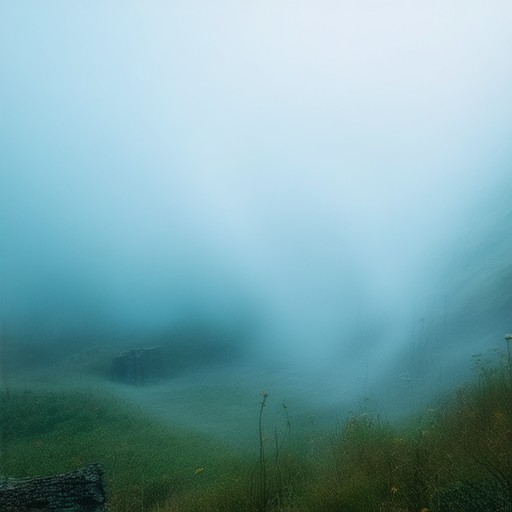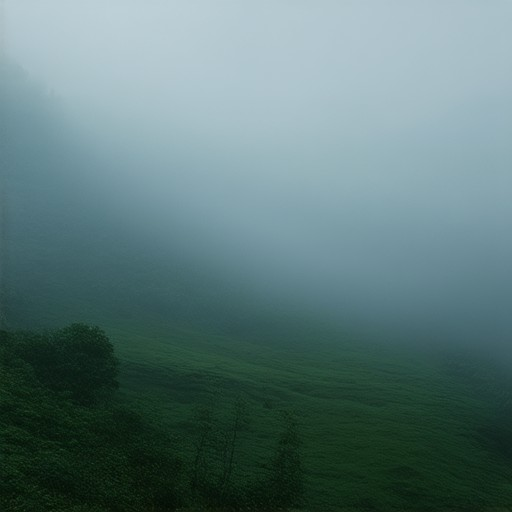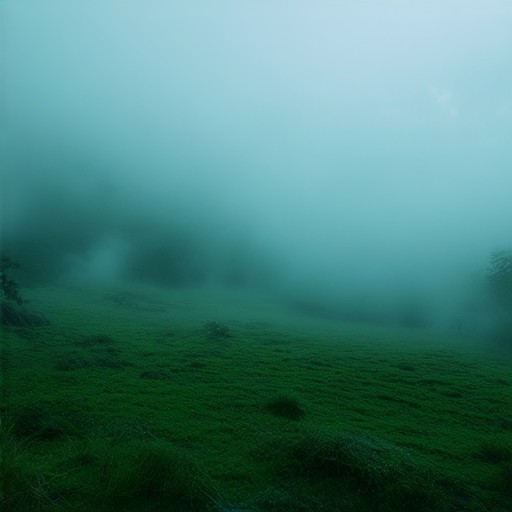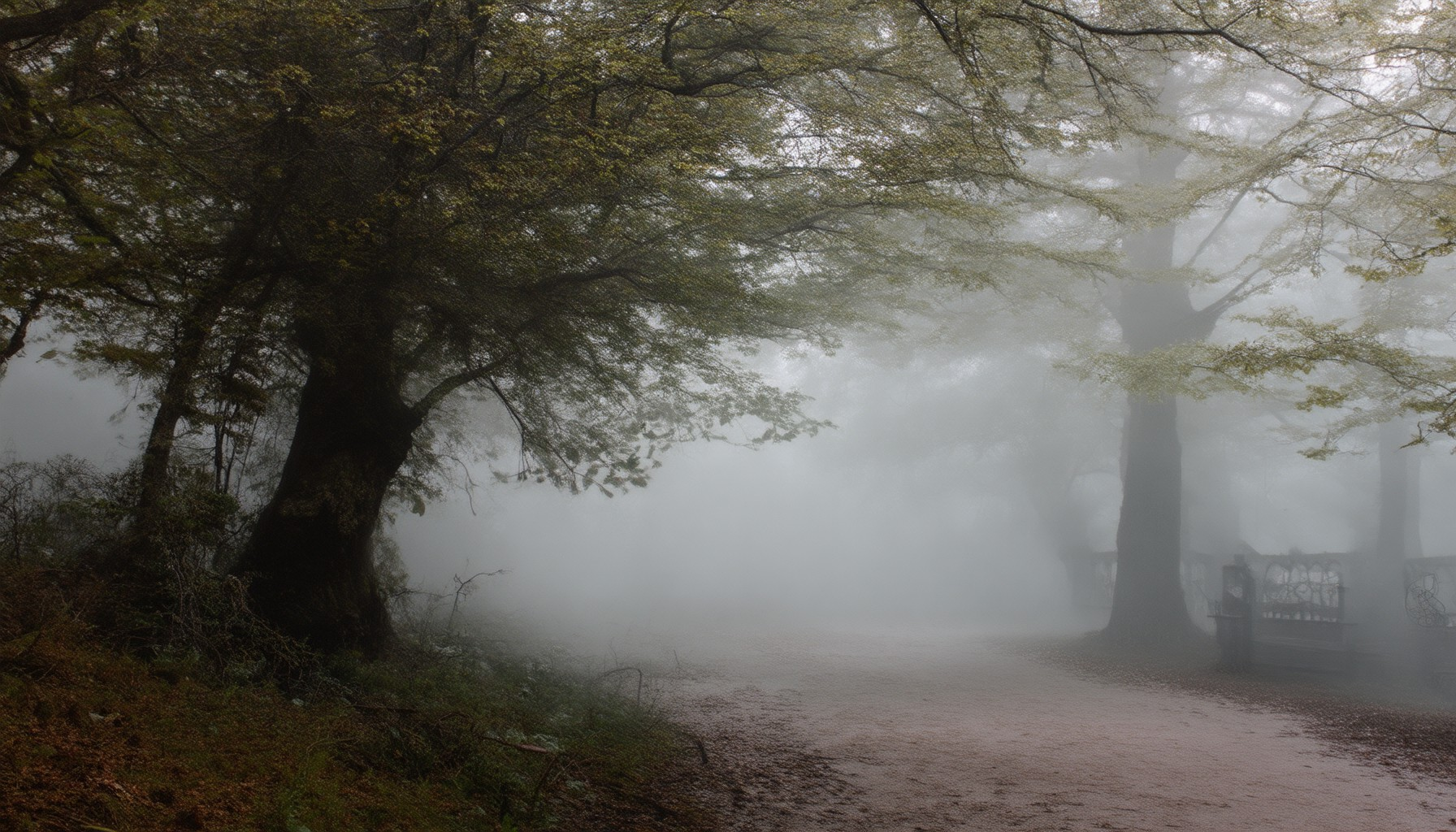Fog, shrouding the world in an ethereal embrace, has long been a subject of fascination, mystery, and folklore. Its presence has been woven into the tapestry of cultural narratives, serving as a symbol of enigma and transformation. From the swirling mists of ancient lore to the haunting imagery of fog-bound landscapes, the fog has become a canvas upon which stories of myth and magic are painted. In this exploration, we delve into the rich tapestry of fog folklore themes, uncovering the hidden meanings and enduring mysteries that this elusive phenomenon has harbored throughout history.

The Symbolism of Fog
Fog embodies a multifaceted symbolism, serving as a rich metaphor across various contexts. Its presence often evokes a sense of mystery, uncertainty, and transition, making it a profound element in literature, art, and philosophy.
Physical and Environmental Significance
- Obscurity and Haze : Fog creates a gray area, blurring boundaries between objects and distances, symbolizing confusion and ambiguity.
- Transience and Change : As fog forms and dissipates, it mirrors life’s transient nature, representing change and impermanence.
- Isolation and Separation : Fog can isolate individuals or communities, emphasizing disconnection and the challenges of communication.
Emotional and Psychological Interpretations
- Uncertainty and Fear : In many cultures, fog is associated with danger or the unknown, sparking fear and anxiety.
- Nostalgia and Memory : The misty glow of fog can evoke nostalgic memories, linking to personal history and cherished moments.
- Hope and Redemption : In some traditions, fog signifies a journey toward enlightenment, symbolizing hope despite obstacles.
Literary and Artistic Representations
- John Carpenter’s The Fog : The iconic 1980 horror film uses fog to heighten tension, symbolizing the approach of malevolent forces.
- Religious and Mythological Contexts : In biblical narratives, fog precedes significant revelations, suggesting spiritual awakening.
- Poetic Imagery : Poets like Robert Browning use fog to depict approaching death, blending physical decay with emotional weight.
Cultural and Mythological Variations
- Chinese Culture : Fog is seen as a bridge between worlds, facilitating communication with spirits.
- Maori Tradition : In Māori culture, fog represents tapu (sacredness), linking to ancient rituals and spiritual practices.
- Greek Mythology : Fog symbolizes the mists of time, obscuring past events and fostering reflection.
Fog in Human Experience
- Perception and Reality : Fog distorts our view of reality, challenging our ability to discern truth from illusion.
- Identity and Belonging : It can amplify feelings of isolation or unity, depending on the context in which it appears.
By exploring these layers of meaning, fog emerges as a powerful symbol, reflecting both the tangible and intangible aspects of human experience.
The Celtic Myth About Fog: The Féth Fíada
In Celtic mythology, the Féth Fíada refers to an otherworldly mist that plays a significant role in the lore of the Tuatha Dé Danann, a group of deities associated with the ancient Celts. This mysterious mist is said to envelop those who encounter it, rendering them invisible to mortal eyes while allowing the Tuatha Dé Danann to remain unseen among humans.
The Féth Fíada is often described as a shimmering, ethereal substance that can appear suddenly, shrouding entire regions in its misty embrace. It is believed to be a manifestation of the Otherworld, a realm parallel to the physical world where the Tuatha Dé Danann reside. Those who encounter this mist are said to experience a sense of awe and fear, as it signifies the presence of these powerful beings who can shape-shift and move through the world unnoticed.
According to Celtic legends, the Féth Fíada is not merely a passive presence but also serves as a tool for the Tuatha Dé Danann to observe and influence humanity. It allows them to remain hidden while still exerting control over the natural world, including the creation of fog itself. This mist is often associated with moments of great power or transformation, such as during battles or pivotal events where the Tuatha Dé Danann intervene in human affairs.
The belief in the Féth Fíada reflects the Celtic people’s reverence for the unknown and the supernatural. It underscores their connection to nature and the idea that the physical world is merely one layer of existence, with the Otherworld existing alongside it. This myth continues to captivate modern audiences, inspiring works of fiction and fueling curiosity about the mysteries of the ancient Celts.
For further exploration of this fascinating myth, visit The Fog , a comprehensive resource dedicated to delving deep into the lore of the Tuatha Dé Danann and their enigmatic creations like the Féth Fíada .

Deity Associated with Fog
In various mythologies, deities are often associated with natural phenomena, and fog is no exception. One notable figure linked to fog is Achlys , a Greek spirit of mist and fog. According to Greek mythology, Achlys envelops the eyes of the deceased, aiding their transition into the afterlife. This association highlights fog’s role in facilitating change and mystery.
Additionally, in Norse mythology, Hades , the god of the underworld, is sometimes depicted as being surrounded by mist, symbolizing the unknown and the journey into the shadows of the afterlife.
In Finnish mythology, Päivöinen is associated with mist and fog, particularly during autumn months. He is known for his role in hunting the Northern Lights, further tying him to the enigmatic qualities of fog.
These associations reflect the cultural and spiritual interpretations of fog, often symbolizing transitions, mystery, and the divine.

Creatures Associated with Smoke
The presence of smoke in various cultures has inspired numerous myths and legends, with many creatures said to manifest or be associated with it. Below are some notable examples:
- Folklore:
- Bogeyman: Often depicted as shadowy figures emerging from fog or mist, the Bogeyman is a common figure in folklore, associated with fear and the unknown.
- Dhole: A creature from Indian mythology, the Dhole is known to haunt forests and can appear as thick, impenetrable smoke or mist.
- Mythology:
- Hadean Wraiths: In Norse mythology, Hadean Wraiths are malevolent spirits that can take the form of dense, acrid smoke or shadowy figures.
- Yuki-Onna: A Japanese snow maiden who transforms into mist during winter months, she is said to lead travelers astray.
- Media and Gaming:
- Slender Man: The Slender Man, a popular creepypasta figure, is often depicted emerging from dense fog or mist, adding an element of mystery to his appearance.
- Smog Demon: From the video game Devil May Cry , the Smog Demon is a literal representation of toxic smoke, with a murky, smoky appearance.
- Literature and Stories:
- Kraken: While traditionally a sea monster, the Kraken is sometimes depicted as rising from the depths, shrouded in mist, giving it an eerie, smoke-like quality.
Who Are the Gods of Smoke Mythology?
The mythology surrounding smoke and its deities is rich and varied, often intertwined with stories of darkness, transformation, and elemental forces. Below are some of the key figures associated with smoke in various mythological traditions:
- Enenra : In many mythologies, Enenras are considered divine beings or demons associated with smoke, darkness, and shadowy forces. They are often depicted as powerful entities that can shape-shift and manipulate smoke. According to legends, there are two types of Enenras: those born as Enenras and those who were once human and have undergone a transformative process.
- Hadean Smiths : These beings are often linked to fire and ash, which are closely related to smoke. They are said to wander the earth, bringing forth ash and soot, and are sometimes seen as harbingers of misfortune.
- Yuki-Onna : A Japanese spirit associated with snow and mist, Yuki-Onna is sometimes linked to the concept of smoke due to her connection with fog and atmospheric phenomena. She is known for her beauty and her ability to appear and disappear swiftly.
These deities often hold significant roles in the lore of their respective cultures, influencing everything from natural disasters to the fate of humanity. Their presence serves as a reminder of the mysterious and often dangerous forces that shape the world around us.

What Are the Characteristics of People Who Smoke?
Individuals who smoke often exhibit certain personality traits and behavioral patterns. Research indicates that smokers may have higher levels of:
- Extraversion: A tendency toward being outgoing, energetic, and sociable, which can influence peer group influences and risk-taking behaviors.
- Neuroticism: Increased emotional sensitivity and a higher likelihood of experiencing stress or anxiety, which may contribute to coping mechanisms like smoking.
- Lower Conscientiousness: Reduced self-discipline, which can affect decision-making and the ability to stick to goals like quitting smoking.
Additionally, smoking is often associated with:
- Impulsivity: A tendency to act on immediate desires rather than considering long-term consequences, which is a common factor in addiction.
- Stress and Anxiety: Smoking may serve as a coping mechanism for managing stress, though it exacerbates both physical and mental health issues over time.
- Low Self-Efficacy: A belief that one cannot effectively control their behavior or circumstances, which can hinder attempts to quit smoking.
Understanding these characteristics helps in developing targeted interventions for smoking cessation programs. Addressing emotional and psychological factors alongside behavioral strategies can enhance success rates in helping individuals kick the habit.
Conclusion: While personality traits play a role, environmental influences, access to resources, and societal norms also significantly impact smoking behavior. Comprehensive approaches that address these multifaceted aspects are essential for reducing smoking prevalence worldwide.




0 Comments